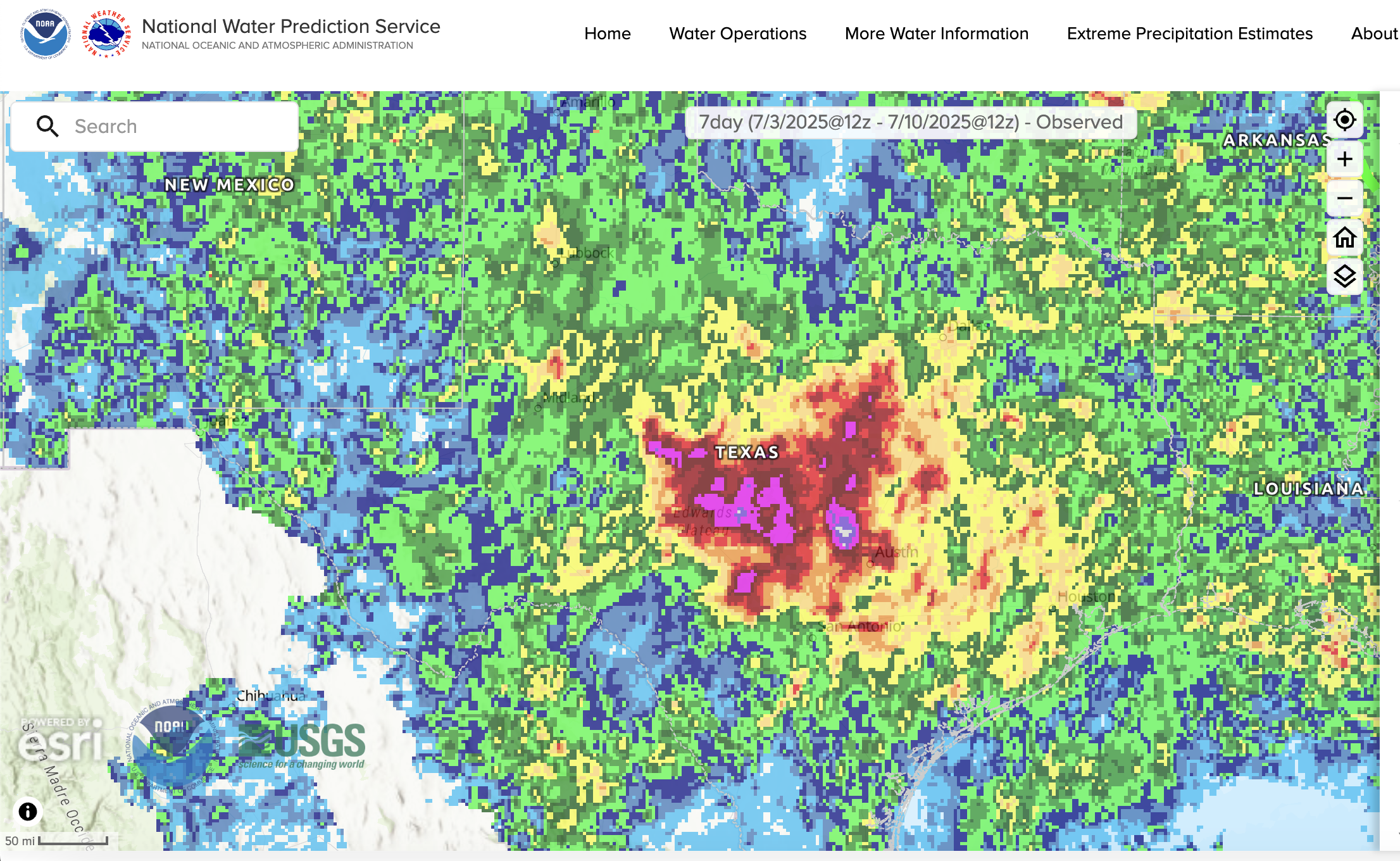Urgent! 7 Emergency Tips for Your Home Recovery After Texas Floods
7 Urgent Emergency Tips for Safe & Smart Home Recovery After Texas Floods
Floods can strike without warning, leaving behind chaos and damage. Proper recovery after the Texas floods isn't just about cleaning up—it's about doing it safely and strategically. From avoiding polluted water after Texas floods to knowing how to compost properly, here are seven emergency tips to help guide you through recovery.

Jump To
1. Stay Alert for Potential Follow-up Rainfall
Even after the initial flood in Texas has subsided, the danger may not be over.
Monitor Weather Reports
Always check local weather updates and flood alerts via reliable channels like meteorological apps, radios, or community services. Flood-prone areas are at risk for secondary flooding due to saturated soil or blocked drainage.

Understand Your Area’s Risk
Know if your home sits on a floodplain or near rivers. These areas are more vulnerable to repeated flooding.
Importance of Flood Warning Systems
Sign up for community alert systems. Early warnings can provide you with precious time to secure your property and evacuate if necessary.
2. Avoid Unnecessary Outdoor Activities, Especially in Flooded Areas
Stepping into floodwaters is extremely dangerous, even if they appear calm.
Stagnant Water = Hidden Danger
Floodwaters often conceal sharp objects, debris, open manholes, or live electrical wires. Children and elderly individuals should especially be kept indoors.
Electrical and Structural Hazards
If water has entered your home, do not use any electrical appliances until the power supply is professionally checked. Water damage can weaken structures, making some areas of your home unsafe.
Safe Movement Guidelines
Wear rubber boots and gloves, and always carry a long stick to gauge water depth before stepping into unknown waters.

3. Treat Flood-Related Injuries Promptly to Prevent Infections
Floodwaters are filled with bacteria and pollutants, making injuries extremely prone to infection.
First Aid Basics
Clean all cuts or abrasions immediately with clean water and an antiseptic. Cover wounds with waterproof dressings. Seek Medical Help When Needed
If a wound becomes red, swollen, or starts oozing, seek medical attention quickly to avoid severe infections like tetanus or cellulitis.
Why Floodwaters Are Risky
Floodwaters can contain raw sewage, chemicals, and dead animals, all of which carry pathogens. Avoid exposure to open wounds entirely.

4. Do Not Drink Tap Water After the Texas Flood Without Boiling
Tap water can look clean but still be contaminated by pollutants and bacteria after floods.
Polluted Water After Floods
Floods can cause cross-contamination between sewage and clean water supplies, making even treated water unsafe.
Safe Drinking Options
Until authorities declare the water safe:
-
Drink only boiled water.
-
Use bottled water if available.
-
Consider portable water filters or purification tablets.
Boiling Guidelines
Bring water to a rolling boil for at least 1 minute to kill harmful organisms.

5. Clear Debris from Yards Immediately After Texas Floods
Debris can clog drainage systems, creating recurrent flooding problems.
Why Timely Cleanup Matters
Leaves, branches, and trash block water outlets and cause stagnant water accumulation, leading to mosquito breeding and waterborne diseases.
Safety Measures
Use gloves and boots, and wear a mask to avoid inhaling mold spores or pathogens during cleanup. Drainage Maintenance
Clear guttering, street drains, and garden water exits to ensure free flow of water in case of additional rain.

6. Do Not Eat Fruits or Vegetables Exposed to Floodwaters
Fresh produce may appear unharmed, but it could carry serious health risks.
Bacteria and Pathogens
Floodwaters can contain E. coli, Salmonella, and other harmful microorganisms. These pathogens can stick to the skins and leaves of fruits and vegetables.
To Discard or Not?
If produce came into direct contact with floodwater:
-
Do NOT consume it.
-
Washing is not enough to ensure safety.
-
Composting is the best solution.

GEME, the Best Biowaste Composter
✅ Large Capacity 19L, Quiet, Odourless
✅ Quick (6-8 hours), Microbes Compost, Full Compost
✅ 30-Day Risk-Free Trial, One Year Warranty
Safe Gardening After Floods
Wait until the garden dries out completely before replanting or consuming anything newly grown. Use protective gloves when handling soil.

7. Recover Soil and Plants by Composting Flood-Damaged Vegetation
Floods often strip soil of its nutrients and leave plants weak or dead.
Why Compost After Floods Matters
Instead of throwing away damaged plants, you can reuse them to nourish your garden. Composting turns waste into nutrient-rich soil. Steps to Composting Flood-Damaged Plants
-
Let the plants dry thoroughly.
-
Remove any severely diseased portions.
-
Shred and layer with brown (dry leaves) and green (wet waste) compostables.
-
Turn the electric composter to speed up decomposition.

Soil Rejuvenation
Consider adding fresh compost to restore lost minerals. Test soil pH if possible for precise amendments.
Frequently Asked Questions (FAQs)
-
What are the first things to do after Texas flood?
Shut off electricity, evacuate if unsafe, and avoid contact with floodwaters. Begin cleaning and drying your home as soon as possible.
-
Is it safe to enter my house right after flooding?
Only if you’ve ensured there's no structural damage or electrical hazard. Always check with professionals if unsure.
-
Can I use tap water to wash my hands after Texas floods?
Use bottled or boiled water until local authorities confirm the water is safe.
-
What should I do with food that was in contact with floodwater?
Don't eat it — this includes canned goods if the labels were soaked or cans were damaged. The best way is to compost it with an electric composter.
-
How long should I wait to plant vegetables again after flooding?
Wait until the soil dries and is tested. Remove topsoil if contaminated and avoid planting edible crops for 30–60 days.
-
How can I tell if my soil is still healthy after Texas flood?
Signs include foul odor, excess moisture, and visible mold. Use compost and organic matter to improve recovery.
Conclusion
Recovering your home after the Texas floods requires careful planning and attention to health and safety. From understanding the risks of polluted water after floods to learning how to compost after floods using damaged vegetation, these emergency tips ensure you don’t just survive, but thrive in recovery. Stay informed, stay safe, and help your environment bounce back stronger than ever.
Related Articles
Sources
-
NOAA: Flood Mapping Service https://www.weather.gov/owp/operations
-
Wikipedia: July 2025 Central Texas Floods https://en.wikipedia.org/wiki/July_2025_Central_Texas_floods
-
Youtube: Catastrophic Texas Floods | July 11, 2025 https://www.youtube.com/watch?v=lA8rRgNP72o
Ready to transform your gardening game? Subscribe to our newsletter for expert composting tips and sustainable gardening advice.
